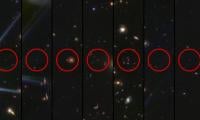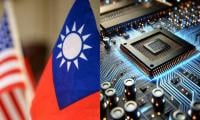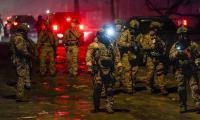BVI confirms beneficial ownership of Maryam
ISLAMABAD: The British Virgin Islands (BVI) has duly verified the beneficial ownership of Maryam Safdar in response to a letter of the Joint Investigation Team (JIT) which also conducted forensic examination of the documents she produced before the JIT and found them forged, a damning indictment with serious consequences.
Since the Panama Papers came out, the Sharif family had insisted that Maryam was a trustee of the apartments in London whereas Hussain Nawaz was the real beneficial owner. This correspondent had publicly announced to apologise if the Panama Papers documents were proved false. But they turned out to be true.
The JIT in its report said it had verified the documents through Mutual Legal Assistance (MLA) letter sent to the BVI’s attorney general to inquire whether the BVI inquired about the beneficial owners of Nielsen and Nescoll from Mossack Fonseca, the law firm whose data was leaked and that came out in the form of Panama Papers. The JIT also sent the copies of the letters exchanged between the BVI’s Director Financial Investigation Agency Errol George and Mossack Fonseca’s Money Laundering Reporting Officer J Nizbeth Maduro for verification.
In the letter addressed to the JIT, Errol confirmed that a letter dated June 12, 2012 was sent by him and that he received the reply from Mossack Fonseca on June 12 that year. In the letters, the law firm dealing with Nielsen and Nescoll was asked about the beneficial owners of the companies, their assets, bank accounts and that whether there was any trust attached or not with these offshore companies of the Sharif family.
In response, Mossack Fonseca declared that Maryam was the beneficial owner and that there was no trust attached with the companies as was being claimed. It was further informed that the companies own a loaning account with Deutsche Bank and the assets in the name of companies are four apartments in Park Lane, London.
Due to the foregoing, the JIT noted in its report that the documents submitted by Maryam, Hussain and Hassan in their defence before the Supreme Court were incorrect. It has been further declared by the JIT that the analysis of tax returns of Maryam showed that she had never declared these apartments as her overseas properties.
On the question of the trust deed the above individuals presented to contradict documents of Panama Papers regarding ownership, the JIT has dismissed them in the light of BVI letter. In its conclusion on this part, the JIT noted: “Ms. Maryam Safdar has submitted fake/falsified documents to the JIT which is a criminal offense. These documents are decoys to manipulate facts and camouflage truth. Mr. Hussain Nawaz and Capt. (R) Safdar as well as Ms. Maryam Safdar have also signed these falsified and misleading documents. Mr. Hasan Nawaz Sharif, having submitted these documents as Respondent No. 8 is also prima facie involved in manipulating and misleading the Honorable Supreme Court of Pakistan.”
As the JIT had conducted forensic examination through a UK-based firm of the documents presented by the family before the Supreme Court of Pakistan and the JIT, it has been noted: “The report prepared by the UK based (Forensic Handwriting & Document Examiner) proves beyond any doubt that presented documents by respondents in the Supreme Court and the documents presented to the JIT by Ms. Maryam Safdar were falsified to mislead the court to believe that they were signed in 2006 whereas they couldn’t have been typed in that font in that year as it was not yet introduced.”
The JIT has also noted the non-provision of documents. “The non-provision of requested corroborative documents/record and refusal to give “Data Disclosure Consent” to the JIT by the respondents, corroborate the fact that respondents were consciously veiling the evidence and its access by JIT which they were otherwise required to produce before the JIT in the light of articles 117, 119 & 129 of Qanoon-e-Shahadat 1984 and Section-9(a)(5) of National Accountability Ordinance 1999.”
-
 Prince Harry All Set To Return To Britain Next Week?
Prince Harry All Set To Return To Britain Next Week? -
 Is Princess Charlotte Becoming Most Confident Young Royal?
Is Princess Charlotte Becoming Most Confident Young Royal? -
 ‘Stranger Things’ Star David Harbour Speaks Up About ‘psychotherapy’
‘Stranger Things’ Star David Harbour Speaks Up About ‘psychotherapy’ -
 Jennifer Love Hewitt Talks About Scary 9-1-1 Episode
Jennifer Love Hewitt Talks About Scary 9-1-1 Episode -
 Kate Middleton Ditches Palace Life For Where She 'truly Relaxes'
Kate Middleton Ditches Palace Life For Where She 'truly Relaxes' -
 Pixel Watch May Soon Warn You If You Leave It Behind
Pixel Watch May Soon Warn You If You Leave It Behind -
 Serious Liver Scarring Shows Potential To Be Reversed With Latest Drug
Serious Liver Scarring Shows Potential To Be Reversed With Latest Drug -
 Elon Musk Backs Donald Trump To Invoke Insurrection Act Amid Minnesota Protests
Elon Musk Backs Donald Trump To Invoke Insurrection Act Amid Minnesota Protests -
 Scientists Unravel Mystery Of James Webb’s ‘little Red Dots’ In Deep Space
Scientists Unravel Mystery Of James Webb’s ‘little Red Dots’ In Deep Space -
 Nano Banana Explained: How Google’s AI Got Its Name
Nano Banana Explained: How Google’s AI Got Its Name -
 Fire Causes Power Outage On Tokyo Train Lines, Thousands Stranded As ‘operations Halted’
Fire Causes Power Outage On Tokyo Train Lines, Thousands Stranded As ‘operations Halted’ -
 YouTube, BBC To Ink Landmark Deal To Launch Exclusive Bespoke Shows
YouTube, BBC To Ink Landmark Deal To Launch Exclusive Bespoke Shows -
 Meghan Markle Turning Prince Harry's Invictus Games Event Into 'bad Fashion Show'
Meghan Markle Turning Prince Harry's Invictus Games Event Into 'bad Fashion Show' -
 TikTok To Roll Out New Age Detection Technology Across Europe
TikTok To Roll Out New Age Detection Technology Across Europe -
 Tom Brady Explains How Divorce With Gisele Bündchen Affected His NFL Career
Tom Brady Explains How Divorce With Gisele Bündchen Affected His NFL Career -
 Taiwan, TSMC To Expand US Investment: A Strategic Move In Global AI Chip Race
Taiwan, TSMC To Expand US Investment: A Strategic Move In Global AI Chip Race



